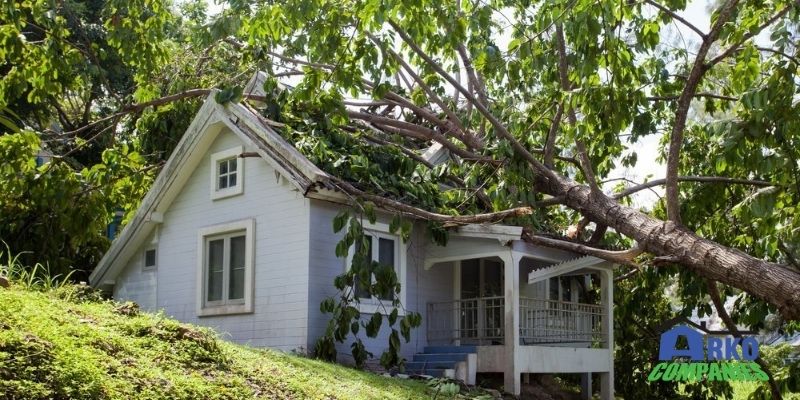Most people love to have trees around their home. Trees provide shade and clean air as well as enhance the beauty of the house. But trees can also cause problems… especially on roofs. Trees can cause damage to your roof in ways you don’t necessarily expect if you’re not paying attention. During storms, trees can fall on the roof and cause both short and long-term damage. That’s why regular inspections are so important. Inspections give you the opportunity to learn about the current strengths and weaknesses of your roof.
Danger of Falling Trees
When it comes to roofs, the abrupt falling of trees can be so destructive. Trees can fall right through the roof of your home, causing major damage that can take a while to repair. Therefore, it’s a good idea to always check out the trees around your home at least once a year to make sure they’re still living and don’t have any rotting or dying parts. If you do feel that the trees around your house are older and not stable, you should consider calling a local tree-cutter who can safely take them down and haul them away for you. It’s not easy to just chop down any old tree, but it is important for the health of your roof that you take down any trees that pose a threat to your home.
Dangling and Overhanging Branches
It obviously looks nice to see large leaning trees around your house because they enhance the beauty of your yard. But dangling branches can become a problem for you. They are a threat to your roof and your home in general. You run the risk of branches breaking due to age and weight… or being snapped off during a storm. Generally, during stormy weather, the weak branches can fall over, crushing anything in their path, including your roof. In order to avoid this, be sure to trim dangling branches to avoid major roof damage!
Clogged Gutters and Downspouts
Leaves, sticks, twigs, moss and dead plant matter can quickly accumulate in your gutters. Sometimes with a lot of trees around your home and bad winds or rains, enough leaf material can fall that your gutters can clog up in a single day. When they are clogged, your gutters become useless and cannot drain water away from your home. This can allow water to pool on the roof and seep into your home where it can do massive amounts of damage very quickly. Gutter guards can help a lot, but there is no replacement for good old routine cleanout every week or so to keep gutters clear.

Leaves and Needles and Debris
Leaf material and other bits and pieces of trees that fall can clog your gutters, but they can also directly affect your roof and can lead to significant damage. Dead plants will decompose and get trapped in the accumulating leaf litter. This can cause rot and decay of your roofing shingles; If it progresses, the decay can spread into the deeper components of your roofing system. Left alone for too long, your entire roof can be compromised as the decay spreads and the weight of the accumulating leaf debris gets heavier and heavier with every storm. This ultimately causes severe roof damage.
Critter and Pest Infestations
Most people understand that trees are part of nature but this means that birds will be living in them and the closer the trees are to your home the closer the birds are as well. Birds, squirrels and bugs all have trees as their chosen abode. If they can easily get from their home to your home, they may decide to move in because your home offers more food and shelter choices for them. Pests can chew their way into your roofing system and cause damage to both the exterior and interior of your home. This is why keeping branches away from the home is something that must be done.
Summary:
People start working on all kinds of home projects as soon as the seasons change; One thing a lot of people don’t think about are the trees around their house. Therefore, while working on your major projects, you should focus on the trees in your yard that could potentially damage your roof. You should not wait for a tree to fall. Instead, make sure to take action immediately and protect your home (and roof) for years to come if and when you see a tree on your property that needs attention.

